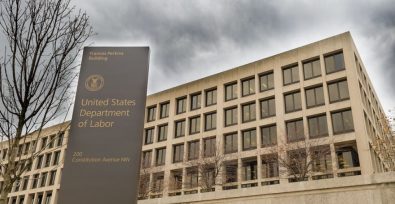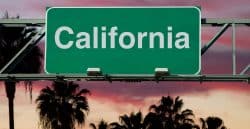It’s that special time again when we dive deep into the world of chocolate, especially with Easter right around the corner. This isn’t just about indulging in your favorite sweets; it’s about understanding the impact behind each bite. The 2024 Chocolate Scorecard is out, and there’s a lot to talk about, especially regarding our fight against forced child labor in the cocoa industry – what has changed, can we celebrate (spoiler: YES!), and what work is left? Let’s break it down, shall we?
What is the Chocolate Scorecard?
The Chocolate Scorecard is a report card for chocolate companies and retailers, grading them on how responsibly they’re acting in terms of social and environmental issues. It’s designed to give us a clear picture of which companies are sweetening the deal not just for consumers, but for cocoa farmers, communities, and the environment. It is a powerful tool for consumers who want to choose chocolate that’s good in every sense of the word.
Chocolate Scorecard and Freedom United – our impact
In our work, we use the Chocolate Scorecard as one of many benchmarks to see how different companies are performing and who we need to target to revise their policies and practices against forced child labor. That’s why, when three of the biggest chocolate companies, Unilever, Mondelez, and General Mills, refused to participate in last year’s survey, we started an action urging them to be more transparent and share insights into their supply chains with consumers and civil society. And they did!
We are excited to share that Unilever and Mondelez have caved to the pressure and participated in this round of the Chocolate Scorecard!
Mondelez (Milka, Oreo, Cadbury, Toblerone, etc.) performed average, securing the 25th spot out of all 38 big companies and earning an orange distinction which signals room for growth in policies, particularly concerning child labor where they were marked below average at 29th place. Nevertheless, their transparency and accountability are a step forward.
Unilever (Ben & Jerry’s, Magnum, Cornetto, Wall’s, etc.) has made commendable progress, breaking into the top 20% of the rank at 7th place and receiving a yellow designation for ongoing improvement in their practices and policies. Even more heartening is their above-average positioning on child labor issues, standing at 13th out of 38.
In contrast, General Mills (Häagen-Dazs, Cocoa Puffs, Fiber One, Cookie Crisp, etc.) has decided to sit out of the Chocolate Scorecard for yet another year. This persistent no-show is disappointing and only fuels our determination to step up our game.
Chocolate and forced child labor
It is no secret that the chocolate industry is plagued by modern slavery. While the entire supply chain is vulnerable to modern slavery, it is the farming and harvesting of cocoa beans where we find the most cases of forced labor, trafficking, and the worst forms of child labor.[1] It is estimated that at least 1.48 million children are exposed to at least one component of hazardous child labor.[2] They are most often forced to work by their parents or other adult family members, given that there are limited alternative opportunities to earn income amidst widespread poverty in the sector.[3]
However, companies in the industry are taking action to eliminate this problem. Progress is slow, yet it is taking place. Certification schemes, such as Fairtrade and Rainforest Alliance are attempts to set standards for environmental and social impact. But these are not enough and companies must go beyond.
The Scorecard reveals that at least companies are paying attention to the issue of forced labor. When asked whether they have a “policy for monitoring, reducing, or eliminating child labor in the company’s supply chains”, all participants, but two who did not respond, said yes. Furthermore, 91% of respondents claimed to “have a program, either operated through a specific agreement or partnership through a certification program, trader or processor, the International Cocoa Initiative or the company’s own CLMRS, that seeks to prevent, monitor, remediate children in situations of child labor.” 68% of those companies confirmed that they “have evidence that the programs or schemes are reducing the prevalence of child labour situations.”
However, verifying this information is not always attainable and there are many loopholes. The Chocolate Scorecard revealed that only an average of 55% of farmer households in the supply chains are covered by the programs to monitor and reduce forced child labor, leaving 45% untouched by these initiatives.
Mars Inc., which received an impressive score for child labor in the Scorecard (5/38) was just recently subject to an investigation in which children as young as five were found to be working in hazardous conditions. And Mondelez was sued in a class action regarding their ‘false claims of sustainability’ and the presence of forced child labor.
Next steps forward
We must remember that, unfortunately, progress is slow. But it is encouraging to see that companies are taking steps in the right direction – albeit tiny steps. That is why we are continuing our advocacy work until the end.
Since our efforts to get General Mills to be more transparent have yet to make an impact, we’re concocting a new approach to increase pressure on them. To get involved in this next phase of action, make sure you’re tuned into our email alerts — you’ll want to be on the frontline for what’s to come!
[1] https://www.walkfree.org/global-slavery-index/findings/spotlights/chocolates-hidden-ingredient/
[2] https://www.norc.org/content/dam/norc-org/pdfs/NORC%202020%20Cocoa%20Report_English.pdf
[3] https://cdn.minderoo.com.au/content/uploads/2019/03/06111232/Cocoa-Report_181016_V15-FNL_digital.pdf





Well done Freedom United keeping up the pressure on chocolate companies. So depressing how slow they are to change but at least they know we’re watching